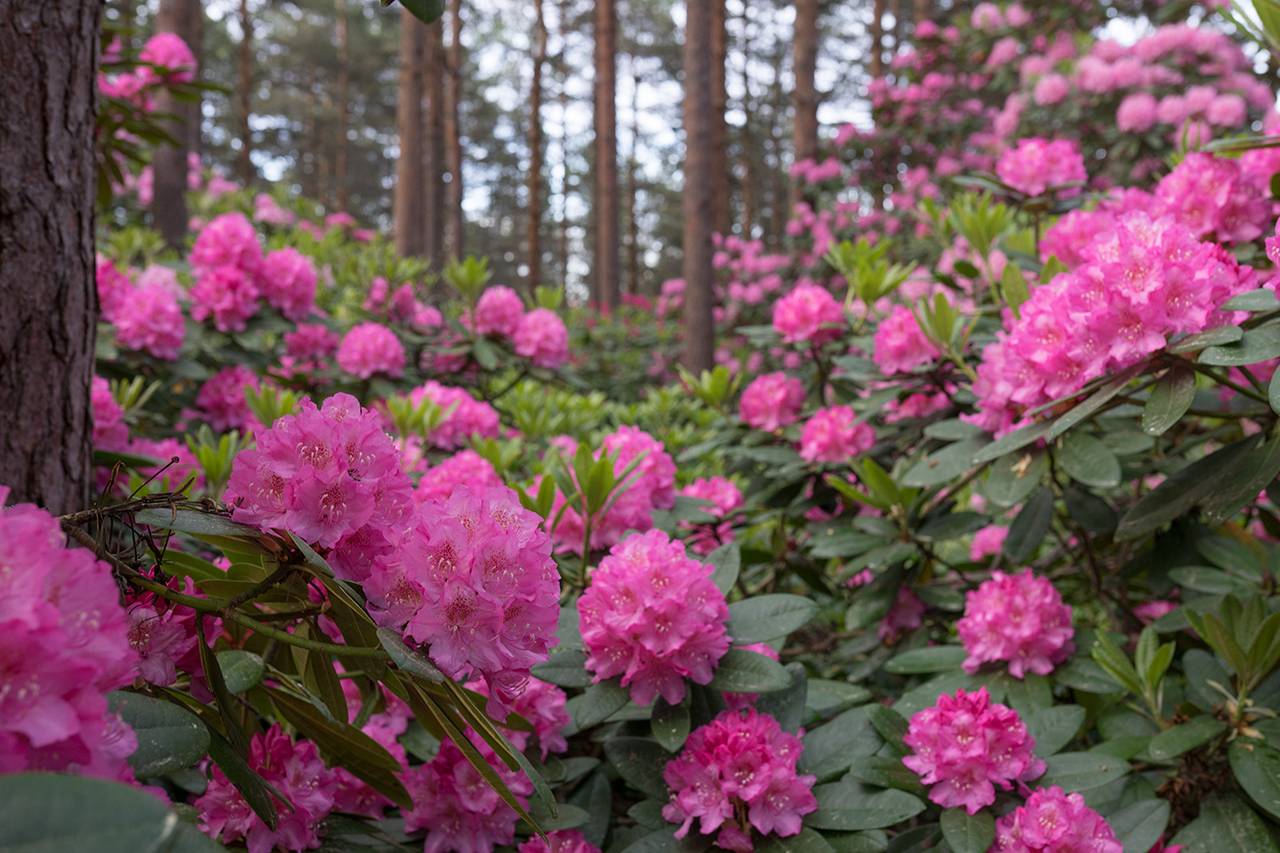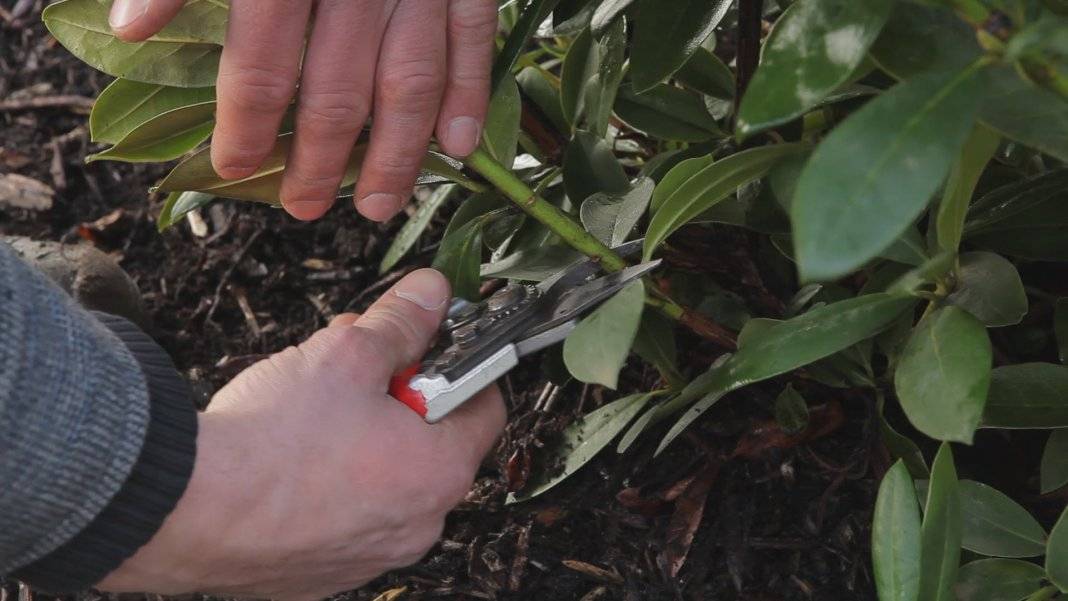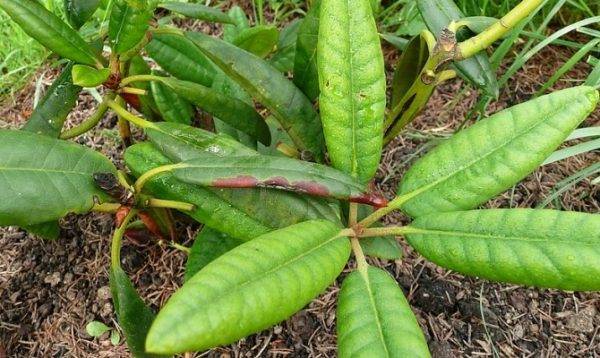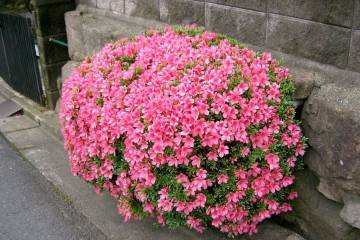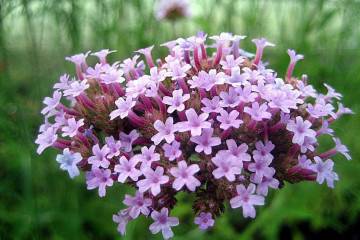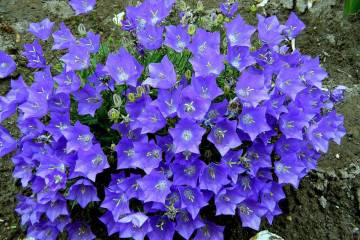Rhododendron The Hague (Haaga): description, planting and care
Content:
Evergreen shrubs with lush flowers are prized by many gardeners. Unfortunately, in the harsh winter conditions, not all varieties survive and remain viable. Rhododendron The Hague is popular among summer residents precisely for its frost resistance and ability to retain the ability to bloom after a long winter.
Description of culture
The Hague rhododendron was bred in 1974 in Finland. The University of Helsinki had a breeding program for such plants. It is believed that the predecessor is the short-fruited variety of the Katevba rhododendron. Currently, there are more than 80 varieties of shrubs.
Description of the rhododendron The Hague
The shrub of this variety is classified as evergreen. The crown represents a regular ball with dense branches. In a decade it reaches a height of one and a half meters. The bark is gray in color, it is quite dense, the leaves are dark green in simple form, up to 13-15 cm long.
Young plants give flowers in the sun or in slightly shaded areas, flowering begins in June and lasts for three weeks. Pink flowers up to 6 cm long. They are collected in inflorescences of 12 pcs. The fruits are light green in color and are no more than 4 cm in size.
Use in landscape design
The Haaga Rhododendron fits perfectly into any landscape design. The plant is combined with evergreen crops. The shrub is often planted with other rhododendrons and looks great with orange and other vibrant flowers.
How to propagate
Shrub propagation is possible in two ways - by seeds and cuttings. Both methods have certain peculiarities.
Seed cultivation is carried out as follows:
- Sowing is carried out in bowls or boxes, into which sand spilled with melted or settled water is poured. Oxalic acid is added to the soil, this will make it more acidic.
- After the appearance of seedlings, the containers are moved to a cool place with a temperature not exceeding 12 ° C.
- Plants propagated in this way begin to bloom in the fifth year.
Cutting of the Hague is used more often, this allows you to get stronger plants that begin to bloom faster. Reproduction is carried out according to the scheme:
- Lignified shoots are cut up to 8 cm long.
- For rooting, they are placed in soil with peat.
- A shelter from a can or glass is erected on top.
- After rooting (after about 2-3 months), the plant is transplanted into containers with soil from peat and needles.
- Leave at 12 ° C.
- In the spring they are planted in the ground together with boxes, after three years it can be transplanted completely into open ground.
If you follow all the steps correctly, then after a few years you can get a beautiful flowering bush.
How to plant rhododendron
In order for the Haaga Hybrid Rhododendron to grow well, certain rules must be followed. A correctly selected and prepared place are the main points that must be taken into account if you want to have a similar plant in the courtyard.
Selection and preparation of the landing site
The shrub does not like lowlands and stagnant moisture, so it is not recommended to choose such zones. Cold air is also unfavorable for the plant. When choosing a place on a hill, it is also necessary to take into account the intensity of winds and sunlight.
It is not recommended to plant Rhododendron Eider, as it is also called, next to maple, elm, linden, chestnuts, poplars. In these trees, the roots are located in the upper layer of the soil, so the shrubs will simply lack nutrients.
Before planting, the soil is dug up and cleaned of roots, debris, stones. If necessary, add peat and a small amount of clay so that the moisture does not go away too quickly. If the soil, on the contrary, is heavy, then it is diluted with sand and humus.
The Hague tolerates planting well, the roots do not penetrate deeply.
The planting hole should be at least 60 cm deep. After planting, the seedling is thoroughly watered.
Description of rhododendron care
The Hague rhododendron is not a very whimsical plant, but it is just as important to care for it as for the rest of the bushes. It is important to cut the tree correctly and prepare it for the winter period.
Plant pruning rules
Pruning is carried out in the spring. After wintering, the rhododendron is carefully examined and the frozen branches are removed. If desired, it is allowed to remove excess shoots if the shrub is growing rapidly.
The annual removal of branches by 15 cm will rejuvenate the plant, such an action stimulates the growth of new shoots.
How to prepare a plant for wintering
Despite the fact that the shrub has good winter hardiness, it must be carefully prepared for the cold season. Young plants must be covered in the early years, using spruce branches and oak leaves for this purpose. Before wintering, the shrub is well watered.
For shelter, a frame is created, on top of which a non-woven fabric is thrown. It is possible to remove it in early spring, but spruce branches are left to avoid sunburn.
How to fertilize rhododendron
The shrub is fed immediately after planting, and then fertilizers are used during the flowering period. To acidify water, use ammonium, calcium, superphosphate. In the spring, the plant will like feeding with magnesium and nitrogen. From the middle of the summer period, feeding is stopped.
What to do if buds do not appear
The absence of buds on a rhododendron is possible for several reasons:
- the presence of pests. Carefully examine the plant and take measures if necessary;
- lack of mineral and nutrients. Provide top dressing;
- lack of moisture. Water the plant and monitor soil moisture.
Diseases and pests
Haag's rhododendron is susceptible to fungal diseases with excessive moisture in the air, poorly ventilated soil, and frequent watering.
Of the pests dangerous for the plant are weevils, spider mites, false shield. Insects feed on the juice from the shoots, which leads to the gradual death of the bushes.
Features of protection against diseases and pests
It is quite possible to protect rhododendron from ailments if you follow simple rules:
- observe the watering regime, monitor the soil;
- treat shrubs from pests in time with special means;
- immediately remove dried and rotten shoots.
Carrying out preventive measures will help keep the plant in excellent condition.
Rhododendron The Hague is a frost-hardy shrub that will decorate any garden. With proper planting and care, the plant will delight you with beautiful flowers. However, it is recommended to carry out prophylaxis against diseases and pests in time.
